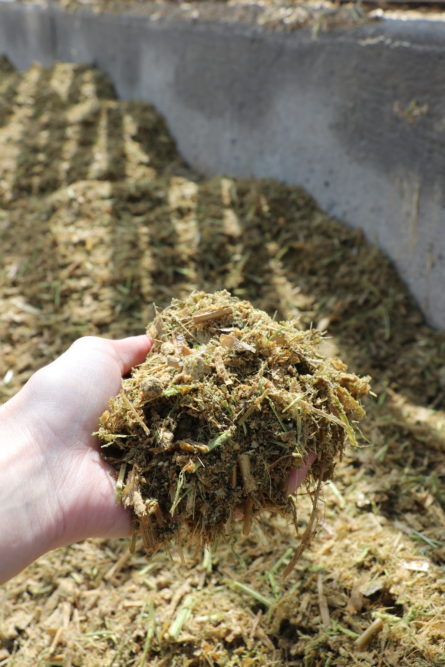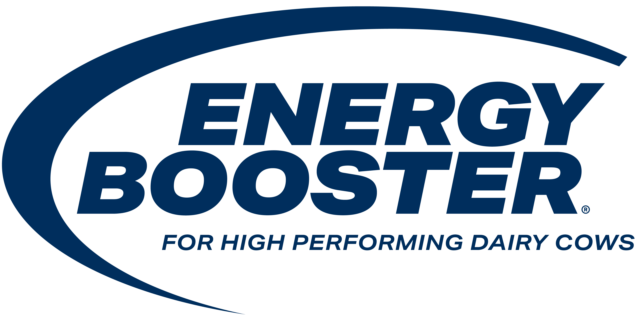The vitamin D status of a dairy cow is based on serum concentrations of 25(OH) D and can range from 40 to 100 nanograms per milliliter. This inactive form is converted to the biologically active form, 1,25-dihydroxyvitamin D [1,25(OH)2D] by the kidneys and is tightly controlled. The active form works with parathyroid hormone (PTH) in the PTH pathway that regulates the cow’s circulating calcium (Ca) concentrations.
Additional supplementation of dietary vitamin D has been investigated in dairy cows to support calcium homeostasis during the transition period. In this report, the different forms of dietary vitamin D, feeding rates and the recommendations for supplementation in a prepartum program will be discussed.
Vitamin D2 vs. D3
Forages can be a source of vitamin D, in the form of vitamin D2 (ergocalciferol). This form is highly variable in common forage types, with levels highest at the time of harvest in leafy forages and degradation occurring over time in stored forages. Since vitamin D3 (cholecalciferol) is more metabolically efficient than vitamin D2, it is the primary form found in blood circulation. Vitamin D3 occurs naturally as a chemical reaction in the skin when a form of cholesterol reacts to ultraviolet light (sunlight). However, this is an unreliable and insufficient source of vitamin D3 unless the cow is exposed to consistent sunlight. Commercially, vitamin D3, either created synthetically or extracted from sheep cholesterol, is the main form of supplemented vitamin D sources.
Vitamin D supplementation is expressed as milligrams (mg) or International Units (IU), while circulating concentrations are expressed as nanograms per milliliter. This converts to, approximately, 1 milligram of vitamin D3 equal to 40,000 IU. The current National Research Council: Nutrient Requirements of Dairy Cattle, 2001, (NRC, 2001), recommendation for vitamin D3 supplementation is 21,000 IU per day for a mature lactating dairy cow. In 2016, researchers surveyed 12 commercial dairy herds and reported that cows supplemented with vitamin D3 between 30,000 and 50,000 IU per day had average serum 25(OH) D concentrations of approximately 70 nanograms per milliliter. One herd in the study was supplementing 20,000 IU of vitamin D3 per day, resulting in cows averaging 42 nanograms per milliliter of serum 25(OH) D concentrations, with 22% of the herd falling below 30 nanograms per milliliter. In determining the new adequate intake requirement for vitamin D supplementation for heifers and dry cows (30 IU per kilogram bodyweight) and for lactating cows (40 IU per kilogram bodyweight), the NASEM, 2021 Nutrient Requirements of Dairy Cattle committee used a response variable based on minimum serum concentration of 30 nanograms per milliliter for 25(OH) D.
Researchers in 2016 also reported that across the 12 surveyed herds supplementing 30,000 to 50,000 IU per day of vitamin D3, fresh cows had lower serum 25(OH) D (less than 60 nanograms per milliliter) compared to late-lactation cows (greater than 70 nanograms per milliliter). The increased conversion of 25(OH) D to 1,25(OH)2 D to be used in immune system functions and within the PTH pathway for calcium mobilization in fresh cows is likely the cause of decreased circulating concentrations. Combined with lower intakes, the increase in metabolic demand for 25(OH) D may be a limiting factor in transition cow health.
Researchers in 2020 used samples collected from five commercial dairy herds to test the association of serum 25(OH) D during the transition period with metabolic disorders. They found that lower serum 25(OH) D concentrations (less than 71 nanograms per milliliter) at two to 10 days post-calving were associated with uterine disease. This has led to investigations of additional supplementation of vitamin D3 and/or supplementation of the 25(OH) D form around the time of calving to better support this increased need.
25-hydroxyvitamin D3
Supplementing 25(OH) D is an alternative to vitamin D3 supplementation and may be seen as a more effective method to increase the circulating concentrations of 25(OH) D. The 25(OH) D bypasses conversion from vitamin D3 by the liver and can directly enter the circulating pool. This intermediate metabolite remains in circulation longer than vitamin D3, extending the efficacy (half-life) from one to three days to up to two weeks. Another advantage in supplementing the inactive form, 25(OH) D, instead of the active form, 1,25(OH)2 D, is that the 25(OH) D does not become the target of enzymes designed to maintain 1,25(OH)2 D within a tight margin.
Researchers in 2012 used a 2x2 factorial design study to investigate the effects of DCAD (+14.4 milliequivalent (mEq) per 100 grams of dry matter (DM) or -16.8 mEq per 100 grams of DM, using commodity anionic salts prepartum and 25(OH) D supplementation (zero or 3 milligrams per day oral dose) using 60 transition dairy cows. Plasma calcium concentrations were significantly increased in cows fed the combination of 3 milligrams of 25(OH) D with a negative DCAD prepartum diet. This is thought to be related to the effects of compensated metabolic acidosis and kidney PTH receptors. Compensated metabolic acidosis is a direct result of feeding a negative DCAD prepartum diet and increases the responsiveness of the kidney to PTH. The kidneys control the activation of circulating 25(OH) D to the active 1,25(OH)2 D. The 2012 research explained that the direct impact of a negative DCAD diet on the kidneys was essential for the success of supplementing 25(OH)D in prepartum cows.
Researchers in 2018 used a 2x2 factorial arrangement of treatments to determine the direct effects and interactions of DCAD and vitamin D3 source (n = 79). Cows were fed a positive DCAD (+13.0 mEq per 100 grams of DM) or a negative DCAD (-13.0 mEq per 100 grams of DM; using a commercial anion supplement) supplemented with either 3 milligrams (120,000 IU vitamin D) of vitamin D3 or 25(OH) D. Cows fed a negative DCAD prepartum diet had improved ionized and total calcium concentrations directly after calving regardless of additional supplementation. Supplementing the prepartum diet with 3 milligrams of 25(OH) D improved prepartum ionized and total calcium.
Feeding both a negative DCAD diet and supplementing 25(OH) D, regardless of DCAD, increased prepartum urinary calcium excretion. Urinary calcium excretion reflects calcium flux, or the movement of calcium in and out of the circulating calcium pool. When 25(OH) D was supplemented with a negative DCAD prepartum diet, urinary calcium excretion increased from 8.5 grams per day to 15.4 grams per day, indicating greater calcium flux prepartum. Ionized calcium excreted in the urine is diverted to the mammary gland at calving to help meet increased calcium needs for colostrum and milk production.
Companion papers to the previously mentioned 2018 research followed the same cows through early lactation. Feeding a negative DCAD diet eliminated clinical hypocalcemia, reduced subclinical hypocalcemia and improved neutrophil activity. Neutrophil oxidative burst and phagocytosis activity, as a measure of immune function, was increased. Supplementation of 25(OH) D improved milk and colostrum production (first milking) and tended to increase milkfat and protein yield, regardless of the prepartum DCAD strategy.
Colostrum production was increased from an average of 6 kilograms to 7.8 kilograms and milk production during the first 49 days in milk (DIM) increased from 31.5 kilograms per day to 35.2 kilograms per day when cows were supplemented with 3 milligrams of 25(OH) D compared to 3 milligrams of vitamin D3.
Combining the prepartum and postpartum results from the different papers in 2018, a prepartum program supplementing 3 milligrams of 25(OH) D3 with a negative DCAD diet improved calcium status and promoted greater milk production and improved health in transition cows.
Summary
Vitamin D is important in many physiological functions of a dairy cow, and circulating 25(OH) D concentrations are a way to measure the vitamin D status of the animal. At the time of calving, serum 25(OH) D decreases and may become a limiting factor in calcium recovery mechanisms and health of postpartum cows. Supplementing 25(OH) D to transition cows in combination with a prepartum acidogenic program may help improve the cow’s vitamin D and further improve calcium status, which leads to better performance.
References omitted but are available upon request. Click here to email an editor.






